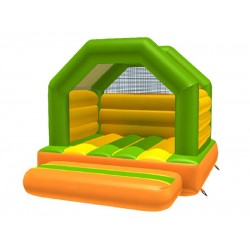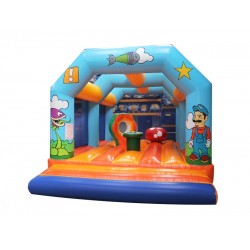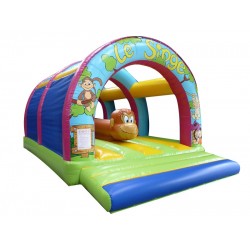Durability and Safety: Materials Used in Bouncy Castles

Bouncy castles, also known as inflatable castles or bounce houses, have become a staple at children's parties and recreational events. They offer endless fun for kids and a sense of nostalgia for adults. However, the durability and safety of these structures depend heavily on the materials used in their construction.
Materials Used in Bouncy Castles
The primary material used in bouncy castles is polyvinyl chloride (PVC) or a similar synthetic material. PVC is favored for its strength, flexibility, and resistance to punctures. It is also easy to clean and can withstand various weather conditions, making it ideal for outdoor use.
1. PVC Fabric
PVC fabric is coated with a layer of PVC on both sides, which enhances its durability and tear resistance. This material is designed to withstand the rigors of constant use and the weight of multiple children jumping and playing. Additionally, the smooth surface of PVC fabric makes it easy to clean and maintain.
2. Nylon
Another material used in some bouncy castles is nylon. Nylon is lightweight and offers good resistance to abrasion and tearing. It is often used in the construction of smaller or less heavy-duty inflatables. However, nylon bouncy castles may not be as durable as those made from PVC, especially for commercial use.
3. Reinforced Seams
The seams of bouncy castles are reinforced with multiple layers of stitching to prevent them from splitting under pressure. High-stress areas, such as corners and joints, are often double or triple stitched to ensure they can handle the strain of vigorous play.
Safety Considerations
Safety is a paramount concern when it comes to bouncy castles. The materials used must not only be durable but also safe for children. Manufacturers adhere to strict safety standards to ensure their products are non-toxic and free from harmful chemicals.
1. Non-Toxic Materials
The PVC and nylon used in bouncy castles are typically free from phthalates and other harmful chemicals. This ensures that the materials are safe for children to come into contact with, even for extended periods.
2. Fire Retardant Properties
Many bouncy castles are treated with fire retardant chemicals to reduce the risk of fire. This is an important safety feature, especially for indoor use or events where electrical equipment may be nearby.
3. Regular Inspections
To maintain safety, bouncy castles should be regularly inspected for wear and tear. Any damage, such as tears or weakened seams, should be repaired promptly to prevent accidents. Proper anchoring and supervision during use are also crucial to ensure the safety of the children playing on them.
Conclusion
The materials used in bouncy castles play a critical role in their durability and safety. PVC and nylon, with reinforced seams and non-toxic properties, ensure that these inflatables can provide safe and enjoyable entertainment for children. By adhering to strict safety standards and performing regular maintenance, manufacturers and operators can help ensure that bouncy castles remain a fun and safe attraction at any event.



